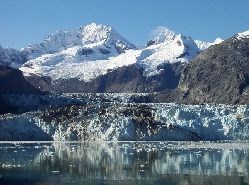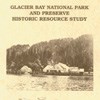
Creation of the new monument meant the prohibition of most forms of commercial or extractive activities—and inevitable conflicts with local people, both native and white. Although mining was originally disallowed, Franklin Roosevelt was convinced to open the monument to mining in 1936. Sporadic gold-mining occurred until passage of the Mining in the Parks Act in 1976 (one very significant claim—a nickel-copper deposit beneath the Brady Glacier—remains in private hands and may one day be developed). Conflicts with other human uses were most apparent after the Monument boundaries were expanded—more than doubling its size--in 1939. With the expansion, which had been eagerly sought by the Park Service mainly because of the wildlife habitat that would be preserved, Glacier Bay became the largest unit of the National Park system (a distinction it has since lost, although it is still larger than any park outside Alaska). Commercial fishing was allowed to continue in the newly expanded monument, although there was actually no legal basis for it. Native seal hunting, a contentious issue for decades, was finally terminated in 1974. A number of fox farmers, and especially the homesteaders at Gustavus, who had settled starting in the 1910s and 20s, unhappily found themselves included within the expanded Monument in 1939. Resolution of most local conflicts, however, was put on hold over the next few years as World War II came to Alaska. 
Glacier Bay Historic Resources Study 
Gustavus Historical Archives and Antiquities |
Last updated: September 27, 2017
